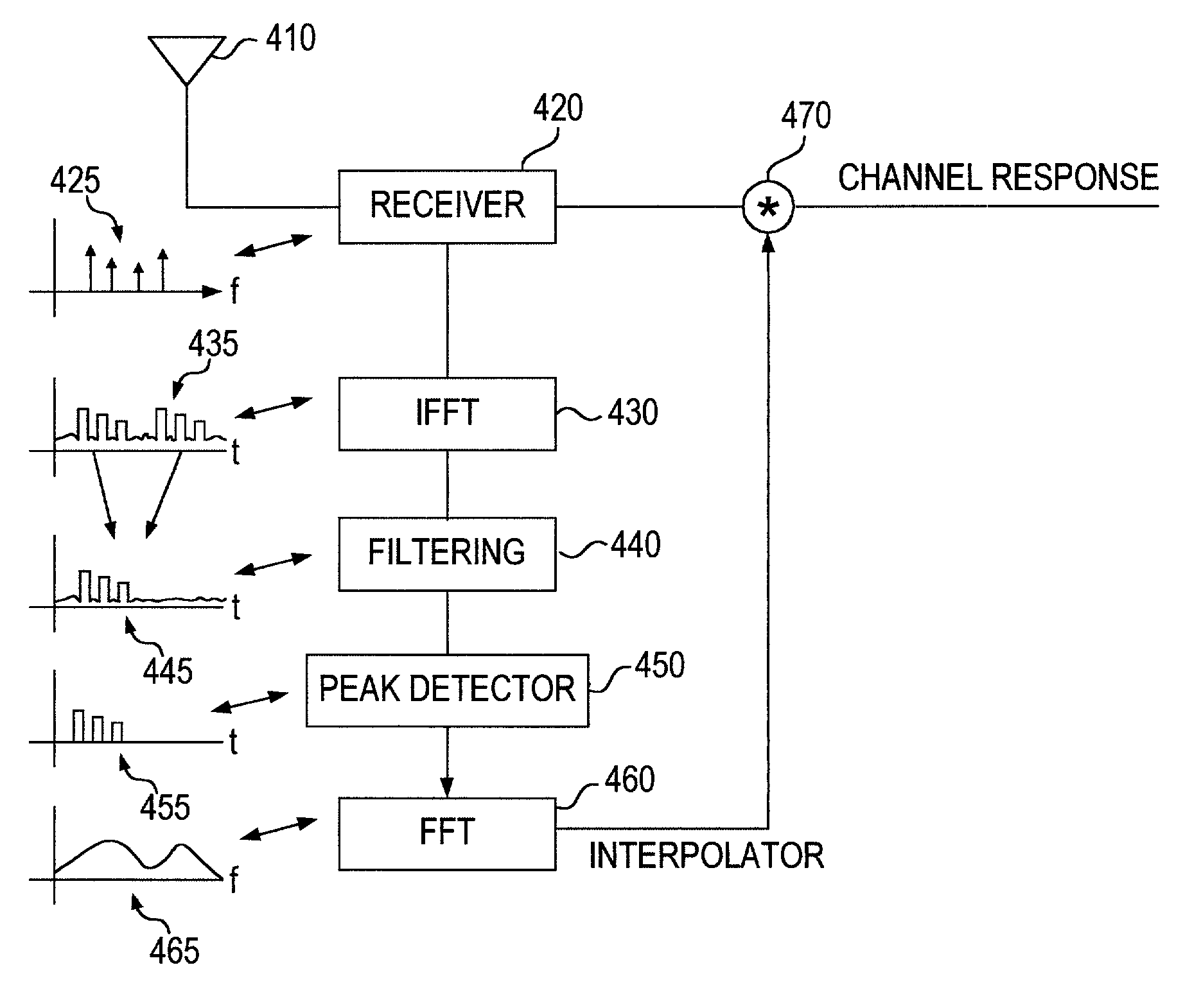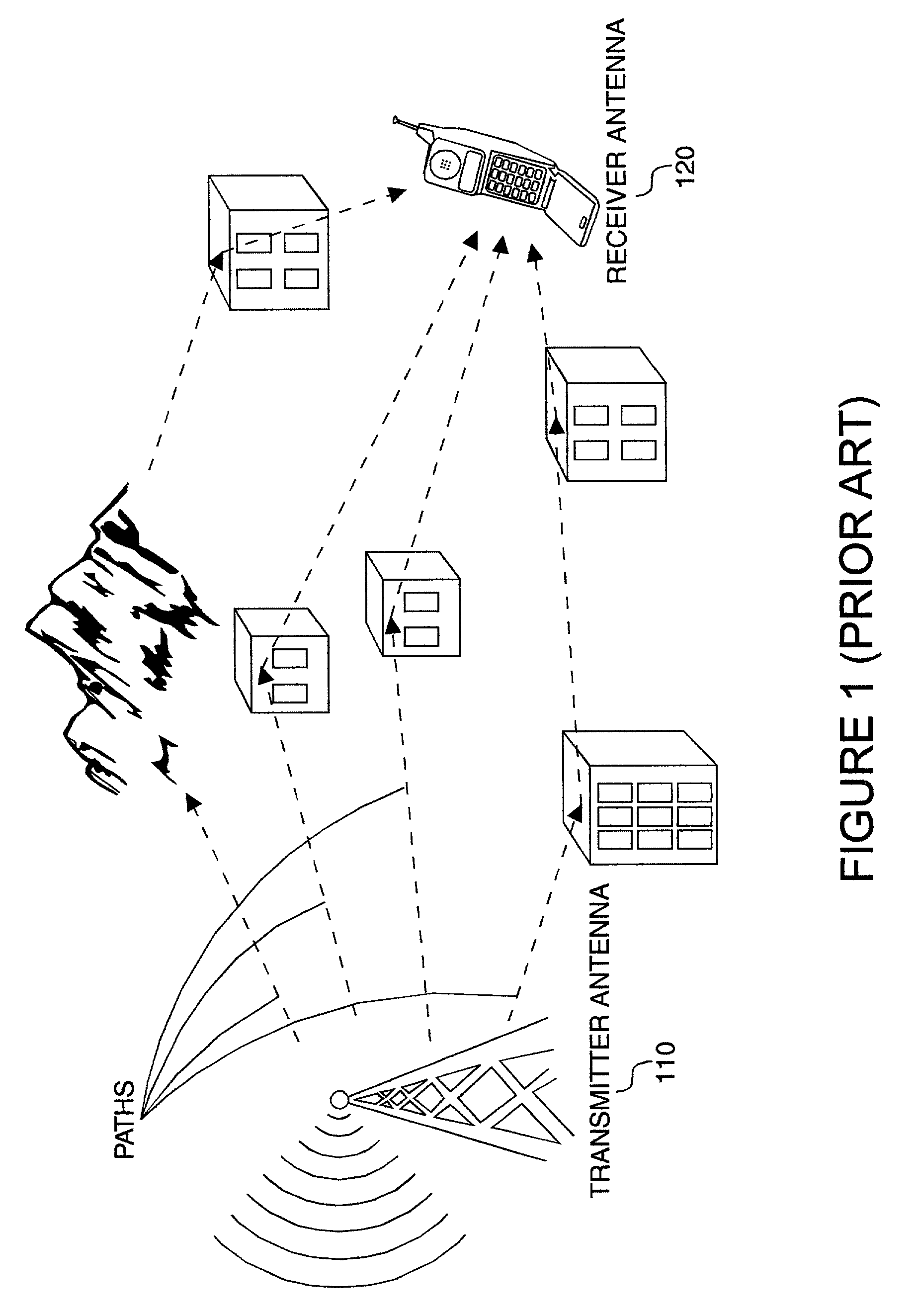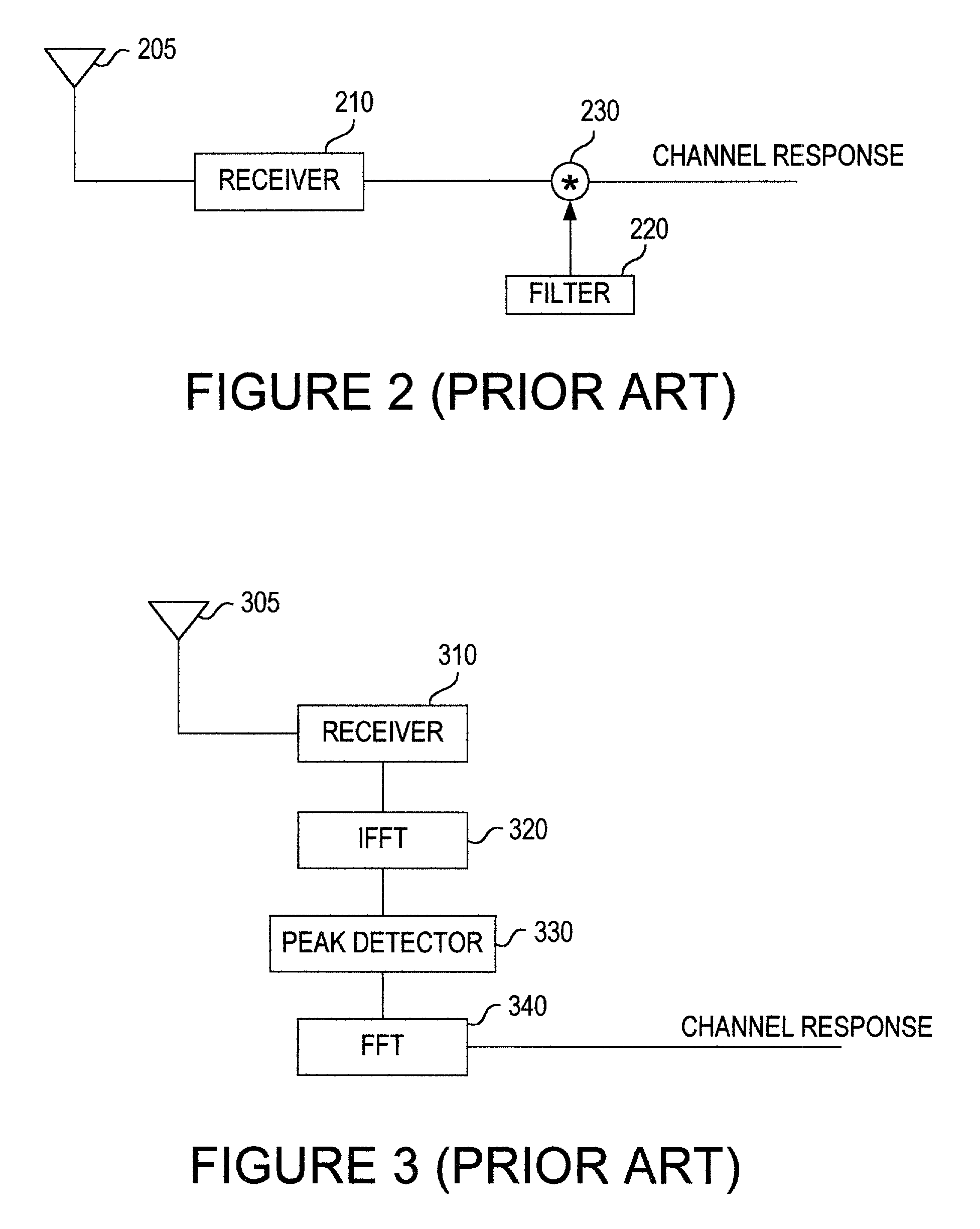System and method for multiple signal carrier time domain channel estimation
a time domain channel and multiple signal carrier technology, applied in multi-frequency code systems, amplitude demodulation, baseband system details, etc., can solve problems such as air interface standards, intersymbol interference or distortion of received signals, and modulated carrier signals fading
- Summary
- Abstract
- Description
- Claims
- Application Information
AI Technical Summary
Problems solved by technology
Method used
Image
Examples
Embodiment Construction
[0037]As shown in the drawings for purposes of illustration, the invention is embodied in an apparatus and a method for estimating a transmission channel between a transmitter and a receiver of a multiple carrier system.
[0038]Particular embodiments of the present invention will now be described in detail with reference to the drawing figures. The techniques of the present invention may be implemented in various different types of wireless communication systems. Of particular relevance are cellular wireless communication systems. A base station transmits downlink signals over wireless channels to multiple subscribers. In addition, the subscribers transmit uplink signals over the wireless channels to the base station. Thus, for downlink communication the base station is a transmitter and the subscribers are receivers, while for uplink communication the base station is a receiver and the subscribers are transmitters. The subscribers may be mobile or fixed. Exemplary subscribers include...
PUM
 Login to View More
Login to View More Abstract
Description
Claims
Application Information
 Login to View More
Login to View More - R&D
- Intellectual Property
- Life Sciences
- Materials
- Tech Scout
- Unparalleled Data Quality
- Higher Quality Content
- 60% Fewer Hallucinations
Browse by: Latest US Patents, China's latest patents, Technical Efficacy Thesaurus, Application Domain, Technology Topic, Popular Technical Reports.
© 2025 PatSnap. All rights reserved.Legal|Privacy policy|Modern Slavery Act Transparency Statement|Sitemap|About US| Contact US: help@patsnap.com



